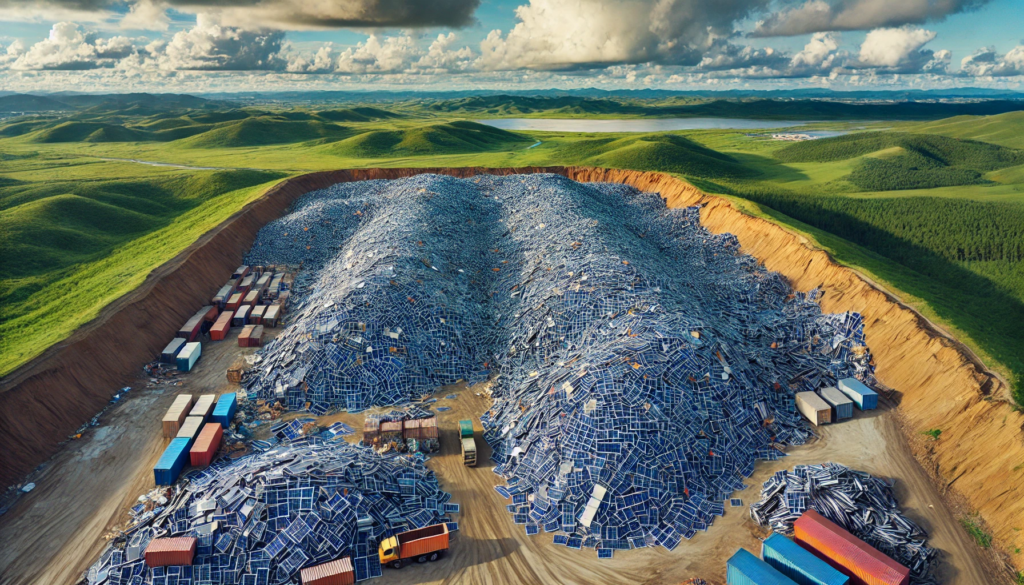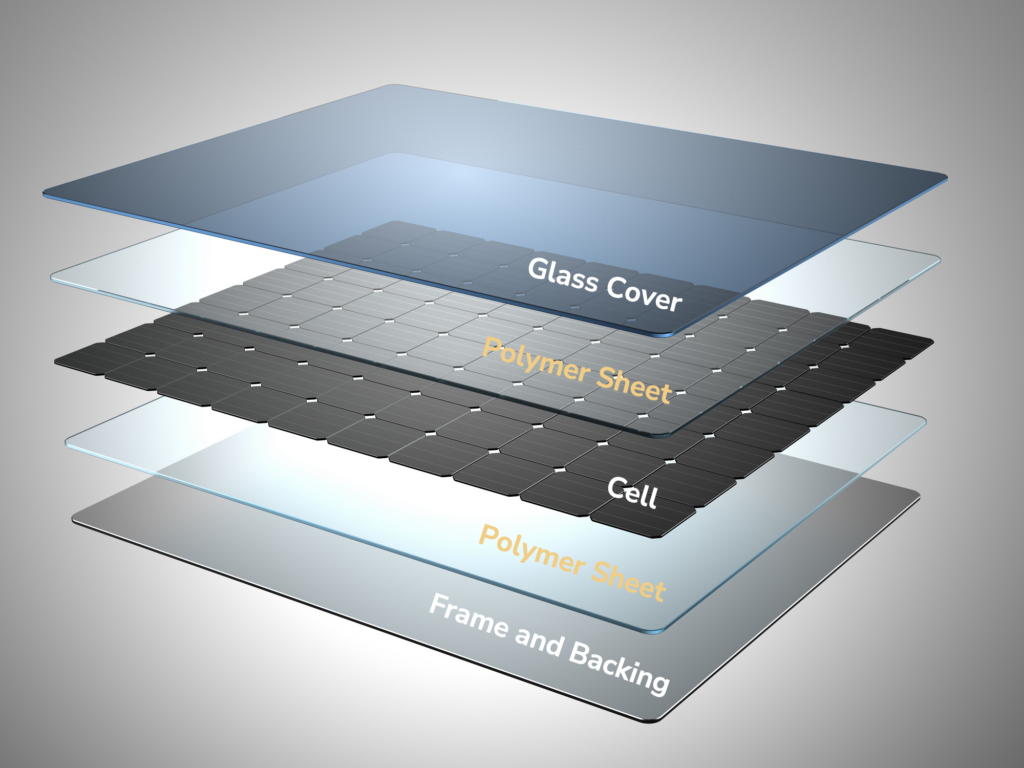It is time to permanently eliminate the contaminant risk of end-of-life solar recycling. With over 3 million solar panels each year expected to reach the end of their useful life by 2030 and 7 to 10 million tons per year by 2050, the need is urgent.
Imagine if you had to send all that solar waste to a landfill. It could take landfills the size of of over 100,000 football fields to store them. In the U.S., we have neither the landfill space nor the desire to contaminate our environment or risk human health, so it makes sense our goal has to be an end-of-life solar panel recycling solution that can be scaled to fit the size and rate of growth of solar energy.
Dr. Fortunato Villamagna, President of Comstock Metals

Why is ending the contaminant risk in end-of-life solar recycling so important?
- We know end-of-life solar panels should not go to landfills given the potential for leaching contaminates that pose serious health and environmental risks into soil and water supplies, which EPA (Environmental Protection Agency) studies have shown can occur from certain types of solar panels.
- We know most end-of-life solar panels wind up in landfills historically.
- We know landfills are extremely space-limited, with 2,600 municipal solid waste landfills operating in the U.S. and many are nearing their capacity (or like New York are beyond capacity).
- We know permitting new landfills is ever more complex and difficult, and that everything that can be safely and economically recycled, should be and not sent to landfills.
- We know society and industry expects to close the solar energy supply chain loop and minimize carbon emissions wherever feasible from the material extraction, manufacturing, and recycling legs of the solar supply chain.
- And we know it is right-minded to safely recover and responsibly reuse as much useful secondary material from end-of-life solar recycling efforts of all electrification products as possible, to reduce impacts of virgin material extraction and processing, which favors efficient use of natural resources wherever feasible. Use it, safely reuse it, and safely reuse it again.
The Contaminant Challenge in End-of-Life Solar Recycling
There are different types of solar panels, but generally they are comprised of the same elements: metal frames, glass covers, polymer (plastics), solar cells (made from various types of silicon and heavy metals), more polymer, and more metal backing).
All solar panels contain laminates (polymers or plastics) and heavy metals, and have been found to contain volatile organic compounds (VOCs). Eliminating this contamination risk is critical. This is why current disposal methods for end-of-life solar recycling have been so challenging: eliminating the plastics from solar panels up front in the recycling process is key.

Laminates – plastics – are used to protect the delicate layers within solar panels, and potentially harmful heavy metals, which are hazardous to human health and the environment.
VOCs from the manufacturing processes, and in some cases introduced in chemical processes to separate solar panel materials from each other, can easily vaporize, posing serious health risks such as respiratory issues and even cancer if inhaled.
The complexity of safely removing and managing these materials in the end-of-life solar recycling process stems from their chemical stability and strong bonding characteristics to other components in the solar panels. And traditional disposal methods, which involve manual or machine crushing and separation, or chemical processing, often fail to eliminate most of these contaminants before sending recovered or separated materials for further processing and reuse in downstream industrial supply chains.
Impurities in recovered materials can also affect the mechanical properties of concrete, potentially compromising the structural integrity of buildings and infrastructure. Dust generated from sandblasting operations can also contain toxic particles, posing inhalation risks to workers.

Particles from sandblasting can contaminate surrounding soil and water bodies, leading to long-term environmental damage and can interfere with the curing process and ultimately compromise the structural integrity of buildings and infrastructure constructed with these materials. 1
By properly eliminating contaminants up front in an end-of-life solar process and ensuring secondary material handling occurs within the existing universal waste designation definition, a closed loop is achievable in the solar industry.
As of 2023, California and Hawaii have already adopted universal waste policies for end-of-life solar panels, and Washington state has a PV Stewardship program which requires manufacturers to provide a solution for the collection, transportation, and recycling of photovoltaic modules sold in or into the state. Other states, including New Jersey, North Carolina, Rhode Island, Maryland, New York, Illinois, and Minnesota, are all known to have proposed bills or have efforts underway to address end-of-life solar recycling through policy.
In October 2023, the EPA began a rulemaking proposing to add end-of-life solar waste panels to the universal waste regulations where heavy metals or other contaminants are found to meet the EPA’s definition of toxic. A final rule is expected in December of 2026.
Until there is a unified set of rules, the best alternative for end-of-life solar recycling is to work with a recycling partner who can guarantee a 100% zero landfill solution, ensuring the safe elimination of contaminant risk for everyone in the supply chain.
Our Solution
Media
Sources
Gerold, E.; Antrekowitsch, H. Advancements and Challenges in Photovoltaic Cell Recycling: A Comprehensive Review. Sustainability 2024, 16, 2542. https://doi.org/10.3390/su16062542
Sica, D.; Malandrino, O.; Supino, S.; Testa, M.; Lucchetti, M.C. Management of end-of-life photovoltaic panels as a step towards a circular economy. Renew. Sustain. Energy Rev. 2018, 82, 2934–2945
U.S. Environmental Protection Agency. “End-of-Life Solar Panels: Regulations and Management.” (US EPA)
U.S. Environmental Protection Agency. Landfills (US EPA)
U.S. General Services Administration, Office of Information and Regulatory Affairs, Office of Management and Budget


